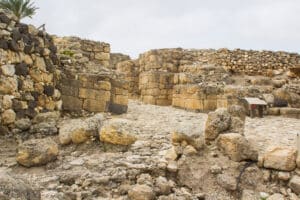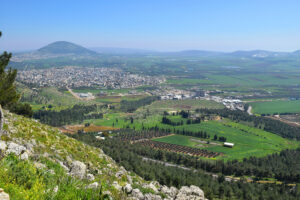Early Iron Age cemetery revealed in the Jezreel Valley shows evidence of a modest village passing from Egyptian to Israelite rule 3,000+ years ago.
Archeologists have identified an Early Iron Age cemetery in Israel’s Jezreel Valley dating from the monarchy of the biblical King David more than 3,000 years ago.
The ancient burial ground, near the modern city of Afula, is next to Horvat Tevet, a village in which five archeological excavations were conducted between 2011 and 2019.
This is the same village where scientists recently used geomagnetic field dating to verify biblical accounts of Egyptian, Aramean, Assyrian and Babylonian military campaigns against the kingdoms of Israel and Judah. A monumental royal house was discovered at the site as well.
According to a new paper published in the American Journal of Archaeology, at least 25 shallow graves dated to the Iron I period (11th–10th centuries BCE) are the latest finds revealed.
Examining the contents of the graves “sheds light on the social complexity, economy, and funerary rituals of a rural community in the Jezreel Valley in the period between the collapse of Egyptian rule in Canaan and the formation of early monarchic Israel.”
The cemetery was first discovered in the course of digging for infrastructure projects back in 2018.
Following excavations by the Israeli Institute of Archaeology and the Institute of Archaeology at Tel Aviv University, researchers from Tel Aviv University and the Israel Antiquities Authority studied the site.
In the cemetery, they found ceramic vessels containing traces of beeswax that may have been melted and poured over the corpses.
One skeleton was clad in linen fabric likely produced at nearby Beit She’an, and wore four ankle bracelets. Chemical analysis of the anklets showed the metal came from the Timna copper mines down south near Eilat.
In general, however, the remains indicate that the community was not well-to-do.
“Based on the finds in the graves and variations between graves, it is concluded that the site was home to a community characterized by minimal wealth accumulation, limited social division, and few long-distance trade contacts, though there are implications that the site had connections with the Beth-Shean Valley,” write the researchers, Jordan Weitzel, Karen Covello-Paran, Hannes Bezzel, Oded Lipschits and Omer Sergi.
The terraced site slopes down to the northern bank of Nahal Tevet (Tevet Stream) overlooking ancient trade routes that connected the Beit She’an and Jezreel Valleys with the Galilee.
The archeologists speculate that the people interred here were residents of Horvat Tevet at around the time this Canaanite village was changing hands from the Egyptians to the Israelites. It’s not clear whether they were Hebrews or members of other local tribes that lived in the area.
Originally Posted at israel21c.org



